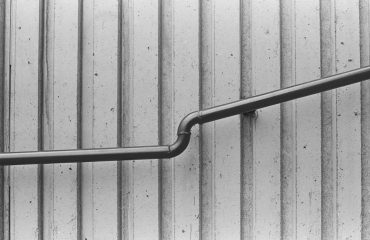Construction nails are often overlooked, but they are a fundamental component of countless building projects. Their seemingly simple design belies a complex world of standards, materials, and durability considerations that significantly impact the structural integrity and longevity of any construction. This comprehensive guide will delve into the crucial aspects of construction nails, helping you understand how to choose the right nails for your specific needs.
Understanding Nail Size and Gauge: The Foundation of Strength
Nail size is defined by its length and gauge (thickness). Length is measured in inches or millimeters, while gauge is a numerical representation of the wire diameter, with smaller numbers indicating thicker nails. A common misconception is that longer nails are always stronger; this isn’t necessarily true. A longer, thinner nail can bend or break more easily than a shorter, thicker one, especially when driven into harder materials. Standard nail sizes and gauges are defined by various industry standards, such as those published by the American Society for Testing and Materials (ASTM). These standards ensure consistency and predictability in nail performance. Understanding the relationship between length and gauge is crucial for selecting the appropriate nail for the job. For instance, framing a house requires significantly stronger nails than hanging drywall.
Material Matters: The Impact of Steel Composition on Durability
Construction nails are primarily made from steel, but the composition of this steel greatly influences their durability and resistance to corrosion. Common steel types include common steel, galvanized steel, and stainless steel. Common steel is the least expensive but also the most susceptible to rust, making it unsuitable for outdoor applications or environments with high humidity. Galvanized steel nails are coated with zinc, providing excellent corrosion resistance, making them ideal for exterior use. Stainless steel nails offer the highest level of corrosion resistance, along with superior strength, but are typically more expensive. The choice of material directly impacts the lifespan of the nail and the structure it secures. Consider the environment and the intended lifespan of the project when selecting the appropriate nail material.
Nail Types and Their Applications: From Framing to Finishing
Construction nails come in a wide variety of types, each designed for specific applications. Common types include:
- Common Nails: General-purpose nails suitable for various applications.
- Box Nails: Thinner than common nails, used for finer woodworking and less demanding applications.
- Finishing Nails: Small, thin nails designed to be easily countersunk and hidden.
- Framing Nails: Large, strong nails specifically designed for framing structures.
- Roofing Nails: Nails with large heads and rings or barbs for superior holding power in roofing materials.
- Concrete Nails: Specifically designed for driving into concrete and masonry.
Choosing the correct nail type is essential for ensuring proper performance and avoiding damage to the materials being fastened. Using the wrong type of nail can lead to weak joints, structural failure, or even damage to the material itself.
Testing and Standards: Ensuring Nail Quality and Performance
Various organizations, including ASTM International, establish standards for construction nails. These standards specify the minimum requirements for dimensions, material properties, and performance characteristics. Nail manufacturers adhere to these standards to ensure consistent quality and reliability. Independent testing is also frequently conducted to verify that nails meet or exceed these standards. These tests assess factors such as tensile strength, shear strength, and resistance to bending. Understanding these standards and testing methods helps ensure you are selecting nails that meet the necessary requirements for your project’s structural integrity.
Selecting the Right Nail: A Practical Guide for Construction Professionals
Selecting the appropriate nail involves careful consideration of several factors:
- Material being fastened: Harder materials require stronger and potentially longer nails.
- Type of construction: Framing requires different nails than finishing work.
- Environmental conditions: Exterior applications necessitate corrosion-resistant nails.
- Desired holding power: Heavier loads demand stronger nails.
- Aesthetic considerations: Finishing nails are often chosen for their ability to be countersunk and hidden.
By carefully considering these factors, construction professionals can select the optimal nails for their projects, ensuring both structural integrity and longevity. Consulting nail size charts and manufacturer specifications is crucial for accurate selection.
In conclusion, selecting the correct construction nails is a crucial aspect of any building project. Understanding nail standards, material properties, and available types allows for informed decisions that contribute to the overall strength, durability, and longevity of the structure. Ignoring these details can have significant consequences, potentially leading to costly repairs or even structural failure.
SEO-Friendly Tags:
- Construction Nails
- Nail Standards
- Nail Durability
- Construction Nail Types
- Choosing Construction Nails




